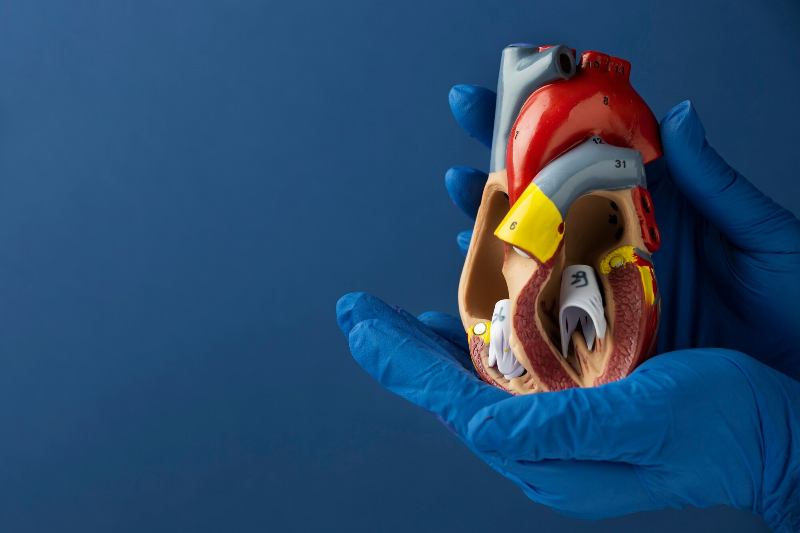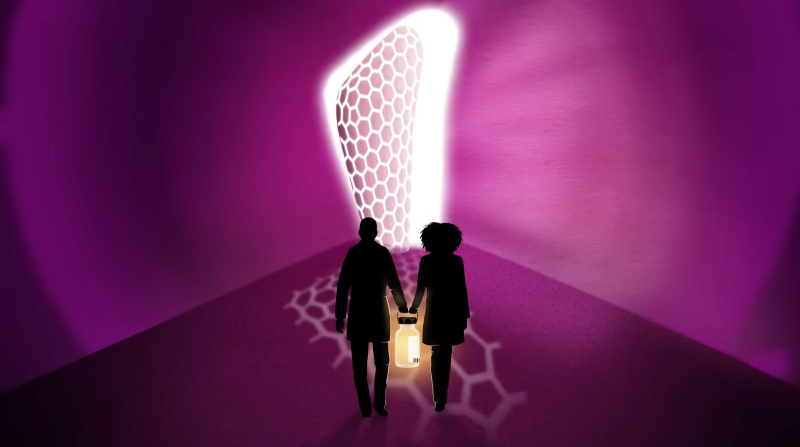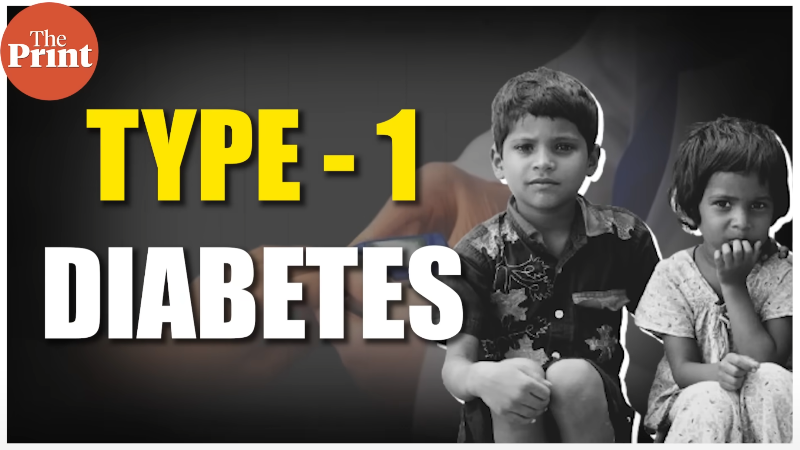Credit:Modulating Lysine Crotonylation in Cardiomyocytes Improves Myocardial Outcomes;DOI: 10.1161/CIRCRESAHA.122.321054
Ischemic heart disease (IHD) remains a leading cause of mortality worldwide, and post-injury myocardial dysfunction is a major challenge. While post-translational modifications of protein lysine residues are crucial for cellular functions, the role of lysine crotonylation (Kcr) in cardiac injury remains unclear. A recent study conducted by Cai et al. aimed to investigate the impact of Kcr on myocardial injury and explore its potential as a therapeutic target.
The researchers conducted a comprehensive proteomic analysis of Kcr modifications in left ventricular tissues from mice subjected to sham or cardiac ischemia-reperfusion (I/R) injury. Using liquid chromatography-coupled tandem mass tag mass spectrometry, they identified 42 and 219 proteins with significant Kcr changes on day 3 and day 5 post-I/R, respectively. Surprisingly, only 2% of these proteins exhibited concurrent changes in protein levels, indicating that Kcr may function independently of protein abundance.
Gene ontology analysis revealed that proteins with significant Kcr changes were primarily involved in fatty acid oxidation, apoptosis, oxidation-reduction processes, and muscle structural development. Notably, the majority of these proteins were localized to the mitochondria and cytoplasm, further highlighting the role of Kcr in regulating cardiomyocyte function.
To investigate the functional significance of Kcr, the researchers focused on tropomyosin alpha-1 chain (TPM1) and isocitrate dehydrogenase 3 (NAD+) alpha (IDH3a), two proteins with significant Kcr changes. They generated site-specific Kcr mutants of TPM1 (K28/29R and K28/29Q) and IDH3a (K199R and K199Q) and explored their effects on cardiomyocyte function in vitro and in vivo.
In vitro experiments revealed that K28/29Q and K199Q mutations increased cardiomyocyte viability and inhibited apoptosis induced by isoprenaline, a proapoptotic agent. Further analysis showed that these mutations improved cytoskeletal structure, regulated calcium homeostasis, and maintained mitochondrial membrane potential. These effects were associated with reduced BNIP3 expression and autophagy, suggesting that Kcr modulation inhibits BNIP3-mediated mitophagy and protects cardiomyocytes from apoptosis.
In vivo experiments demonstrated that K28/29Q and K199Q mutations preserved cardiac function and reduced fibrosis 14 days post-I/R injury. Similarly, treatment with sodium crotonate (NaCr), a Kcr-inducing agent, improved cardiac function and reduced fibrosis and apoptosis 7 and 14 days post-I/R injury. These findings indicated that enhancing general Kcr or modulating specific Kcr sites in mitochondrial and myofilament proteins could effectively protect the heart from I/R injury.
The researchers further explored the mechanism of NaCr-induced cardioprotection. They found that NaCr inhibited isoprenaline-induced autophagosome accumulation by downregulating BNIP3 expression and the mTOR signaling pathway. This suggested that NaCr protected cardiomyocytes from apoptosis by inhibiting BNIP3-mediated mitophagy and preventing mitochondrial depolarization.
This study provided compelling evidence that Kcr played a crucial role in cardiomyocyte response to I/R injury. By modulating specific Kcr sites or enhancing general Kcr, it is possible to protect cardiomyocytes from apoptosis and mitochondrial stress, thereby preserving cardiac function and reducing fibrosis. These findings open up new avenues for developing therapeutic strategies to improve outcomes in IHD patients.
a,b, Quantification of in vivo bioluminescence imaging (n = 5 biologically independent mice, a) and H&E-stained coronal sections (b) of immunocompetent mice bearing GL261-derived intracranial tumours at 3 weeks. Scale bar, 2 mm. c, Correlations between lysine catabolism-repressed signature, GCDH mRNA level, activated CD4 T cell, activated CD8 T cell and NK cell in GBM dataset. d, Correlation of GCDH, ECHS1 mRNA levels and immune scores based on ESTIMATE algorithm in TCGA GBM dataset. e, IB analysis of Kcr in GL261 upon Gcdh KD. f, Flow cytometric analysis of CD8 T cells (upper panel) and Granzyme B CD8 T cells (bottom panel) in GL261-derived intracranial tumours at day 14 post-injection. g, Scatter plots showing the correlation between GCDH expression levels and CD8 T cell infiltration scores in TCGA GBM dataset from TIMER database. The grey area indicates 95 % confidence interval for the regression line. h, Kaplan-Meier survival plots of immunodeficient mice bearing GL261-derived intracranial tumours fed control or lysine-restricted diet starting at 7 days before transplantation (n = 5). i,j, In vivo bioluminescence imaging (i) and quantification of total flux (n = 5 biologically independent mice, j) of immunocompetent mice bearing GL261-derived intracranial tumours with anti-PD-1, lysine-restricted diet or the combination treatment. k, IF staining for CD8, IFNγ and Kcr in indicated sections (n = 3 biologically independent mice). Scale bar, 20 µm. l, A working model showing that disruption of reprogrammed lysine catabolism-derived histone Kcr suppresses GSC maintenance and induces anti-tumour immune response by promoting immunogenic retroelements and IFN signalling. Representative of two independent experiments in e. In a and j, data are presented as mean ± SEM. Two-tailed unpaired t test for a, Pearson’s correlation with two-tailed test for c and d, Spearman’s Rho with two-tailed test was used for g, log-rank test for h, one-way ANOVA followed by multiple comparisons with adjusted p values for j.++++
Credit:DOI: 10.1038/s41586-023-06061-0.
It is worth noting that Kcr modification also plays an essential role in the regulation of tumor microenvironment. Glioblastoma (GBM), an aggressive brain cancer, exhibits an immunosuppressive microenvironment that hinders the efficacy of immunotherapy. Glioblastoma stem cells (GSCs), the primary drivers of GBM progression and therapy resistance, rely on metabolic reprogramming to support their growth and maintain their stemness. Yuan et al. investigated the role of lysine metabolism in GSCs and its impact on tumor immunology.
The research team first identified that GSCs exhibit elevated lysine uptake and catabolic activity compared to differentiated GBM cells and neural stem cells. They demonstrated that GSCs upregulated the lysine transporter SLC7A2 to increase lysine uptake and promote tumor growth. Furthermore, GSCs reprogrammed lysine catabolism to accumulate crotonyl-CoA, a precursor for histone lysine crotonylation (Kcr). They found that GSCs downregulated the enzyme ECHS1, which converted crotonyl-CoA to other metabolites, leading to increased histone Kcr levels.
The study revealed that nuclear-localized GCDH, the enzyme responsible for crotonyl-CoA production, interacted with the crotonyltransferase CBP to promote histone Kcr. Loss of histone Kcr impaired GSC growth and tumorigenic potential, while also enhancing the generation of immunogenic cytosolic double-stranded RNA (dsRNA) and dsDNA. This triggered the RNA sensor MDA5 and DNA sensor cGAS, leading to the activation of type I interferon signaling and the recruitment of CD8+ T cells into the tumor microenvironment.
The research team further demonstrated that a lysine-restricted diet synergized with MYC inhibition or anti-PD-1 therapy to slow tumor growth and enhance anti-tumor immunity. They proposed that GSCs co-opted lysine uptake and degradation to shunt the production of crotonyl-CoA, remodelling the chromatin landscape to evade interferon-induced intrinsic effects on GSC maintenance and extrinsic effects on immune response.
In summary, this study identified lysine metabolism as a critical regulator of GSC fate and immune response in GBM. By reprogramming lysine catabolism to accumulate crotonyl-CoA and promote histone Kcr, GSCs created an immunosuppressive microenvironment that hindered anti-tumor immunity. Targeting lysine metabolism, particularly the GCDH-CBP axis, holds promise for enhancing the efficacy of immunotherapy in GBM. Overall, these studies underscore the significance of Kcr in both cardiac and oncological contexts, paving the way for potential therapeutic advancements.
Reference:
Cai W, Xu D, Zeng C, Liao F, Li R, Lin Y, Zhao Y, Dong W, Wang Q, Yang H, Wen D, Gu J, Shentu W, Yu H, Zhang X, Wei J, Duan J. Modulating Lysine Crotonylation in Cardiomyocytes Improves Myocardial Outcomes. Circ Res. 2022 Aug 19;131(5):456-472.
Yuan H, Wu X, Wu Q, Chatoff A, Megill E, Gao J, Huang T, Duan T, Yang K, Jin C, Yuan F, Wang S, Zhao L, Zinn PO, Abdullah KG, Zhao Y, Snyder NW, Rich JN. Lysine catabolism reprograms tumour immunity through histone crotonylation. Nature. 2023 May;617(7962):818-826.







Post comments